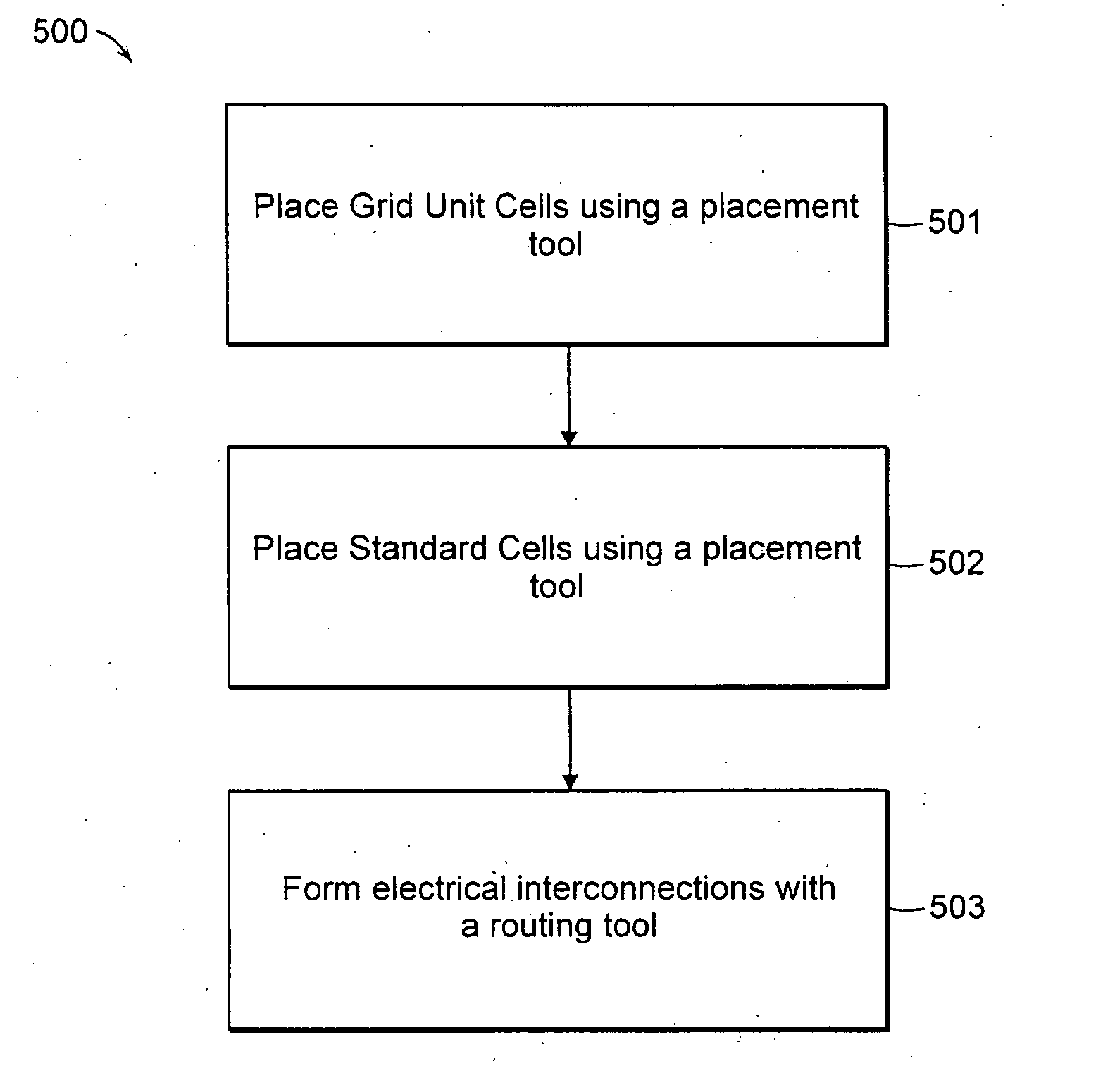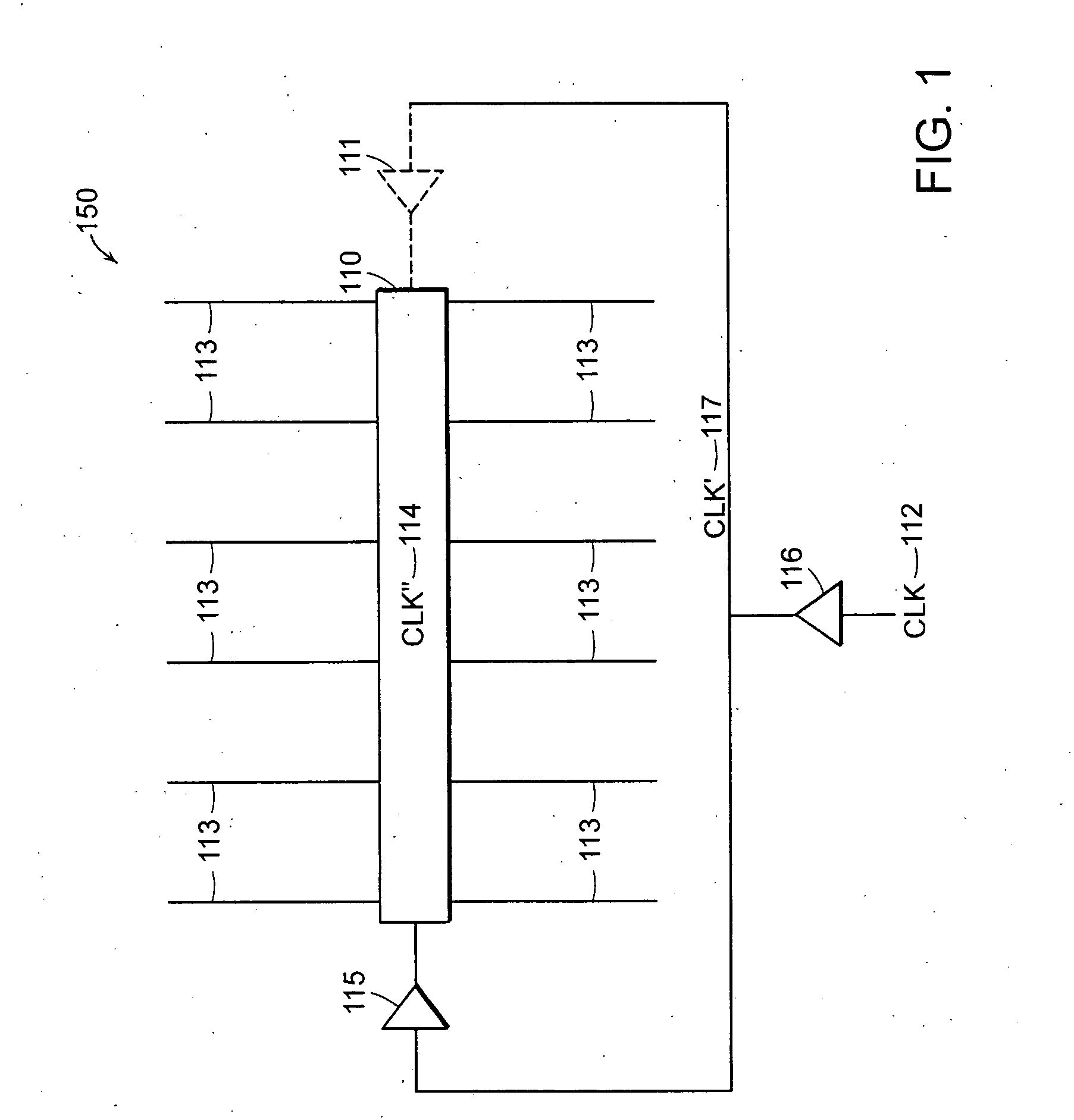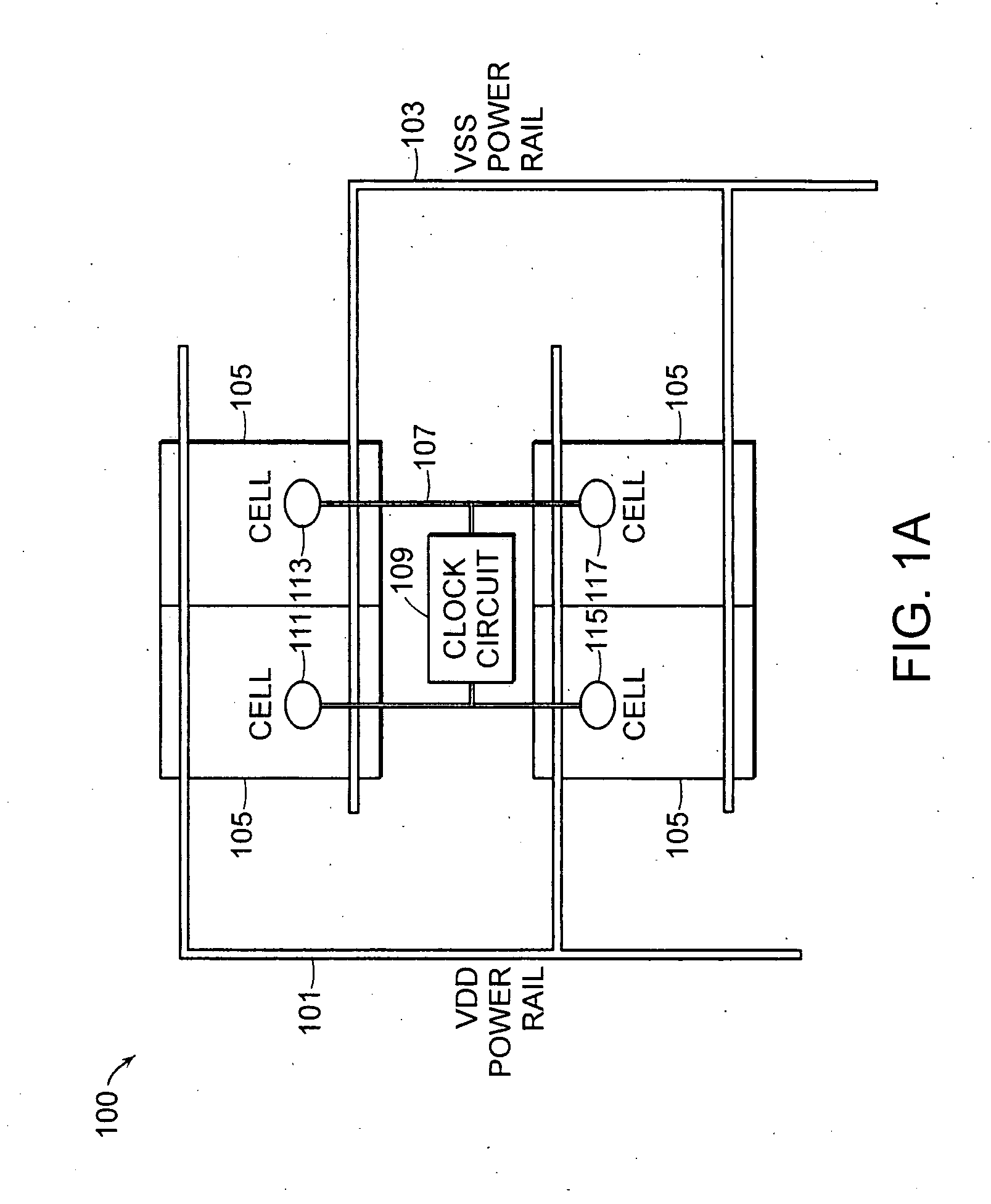ASIC design using clock and power grid standard cell
- Summary
- Abstract
- Description
- Claims
- Application Information
AI Technical Summary
Benefits of technology
Problems solved by technology
Method used
Image
Examples
Embodiment Construction
[0035] A description of preferred embodiments of the invention follows.
[0036] In order to achieve minimum skew in an H-clock tree, as shown in FIG. 2, nodes 201-204 must be balanced. Since each node 201-204 will see a different load, balancing the nodes becomes a difficult task.
[0037] An alternative to the clock trunk and clock tree architectures is the clock grid architecture. The grid architecture is characterized by an orthogonal array of interconnected wires driven by a plurality of matched clock buffers placed at regular intervals along the grid. The clock grid forms a single low-skew clock network, which obviates any need for balancing loads. In layout, the grid must be extended to cover all clocked components in the ASIC design. ASIC clock grids are usually custom designs, which must be merged into the place-and-rout area of the design. No commercially available ASIC tools exist today to generate clock grids automatically. By subdividing a custom clock grid into cell-sized ...
PUM
 Login to View More
Login to View More Abstract
Description
Claims
Application Information
 Login to View More
Login to View More - R&D
- Intellectual Property
- Life Sciences
- Materials
- Tech Scout
- Unparalleled Data Quality
- Higher Quality Content
- 60% Fewer Hallucinations
Browse by: Latest US Patents, China's latest patents, Technical Efficacy Thesaurus, Application Domain, Technology Topic, Popular Technical Reports.
© 2025 PatSnap. All rights reserved.Legal|Privacy policy|Modern Slavery Act Transparency Statement|Sitemap|About US| Contact US: help@patsnap.com



